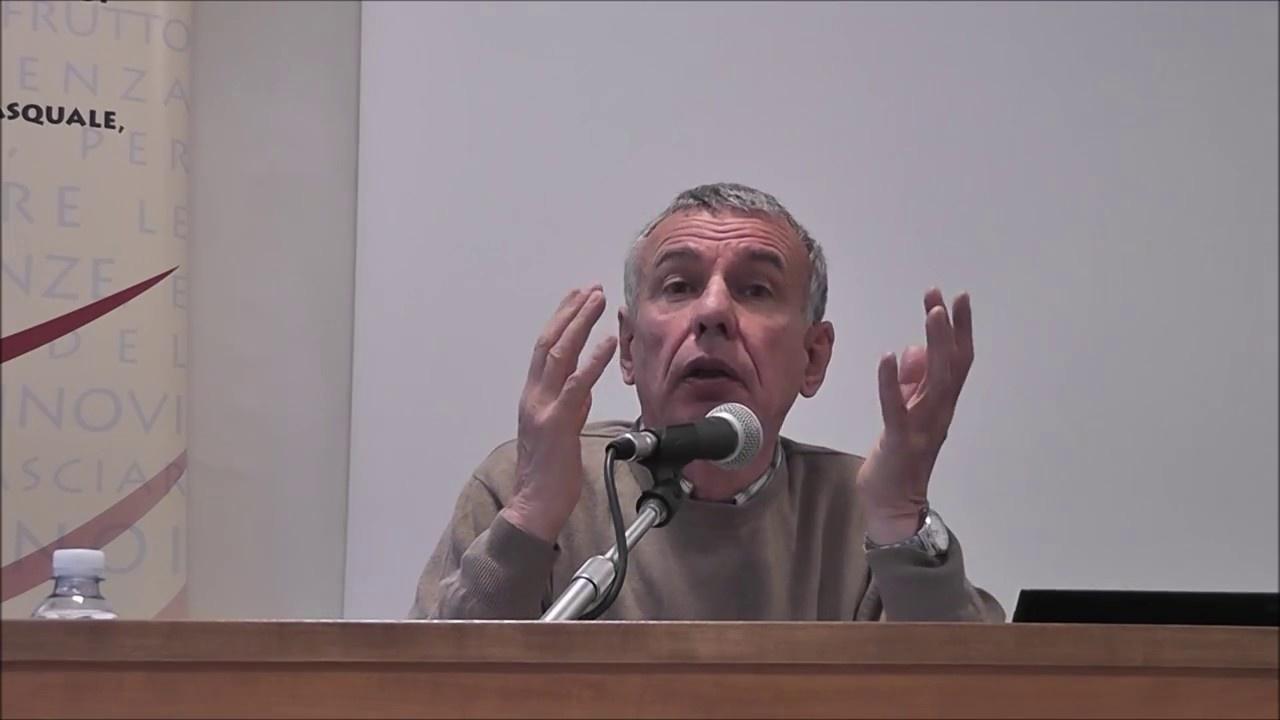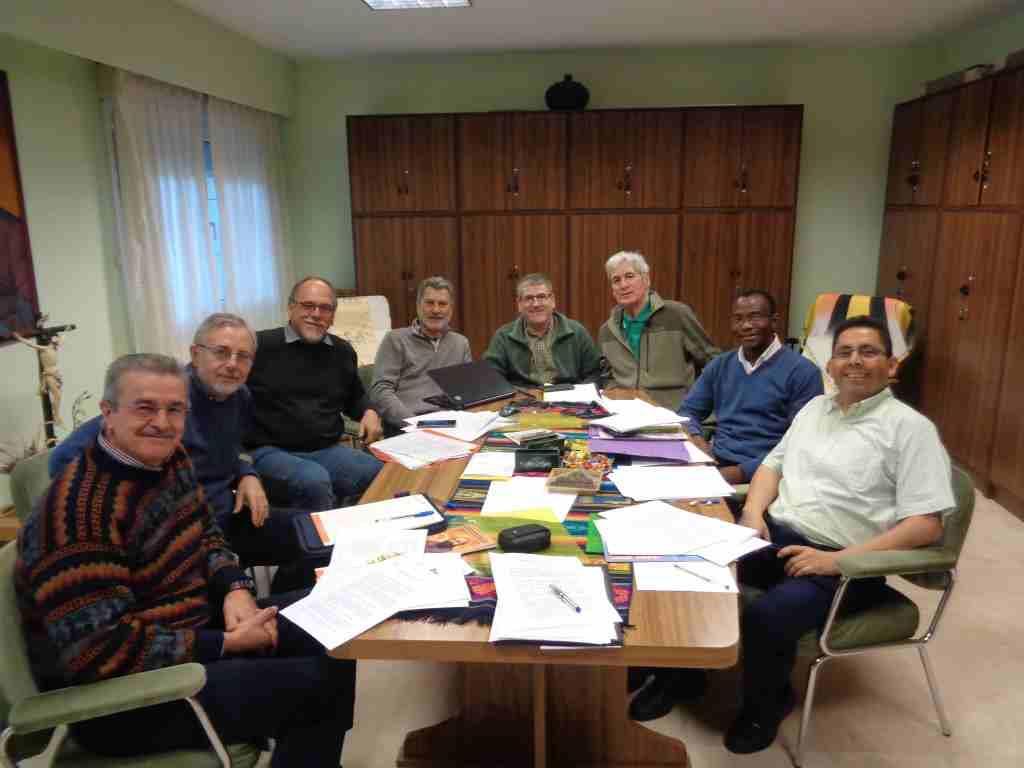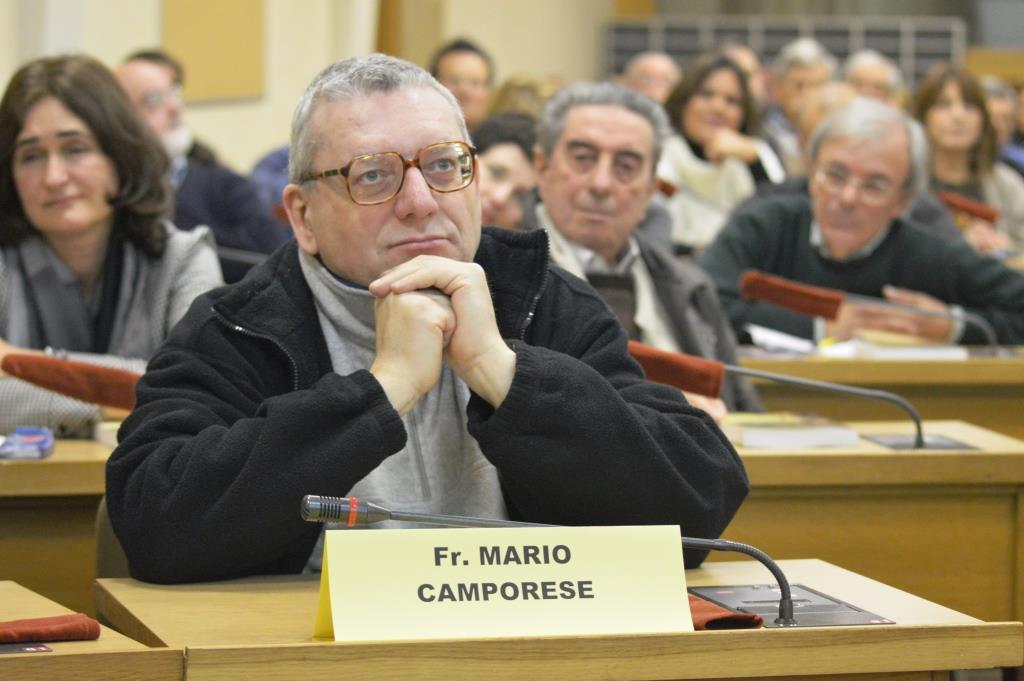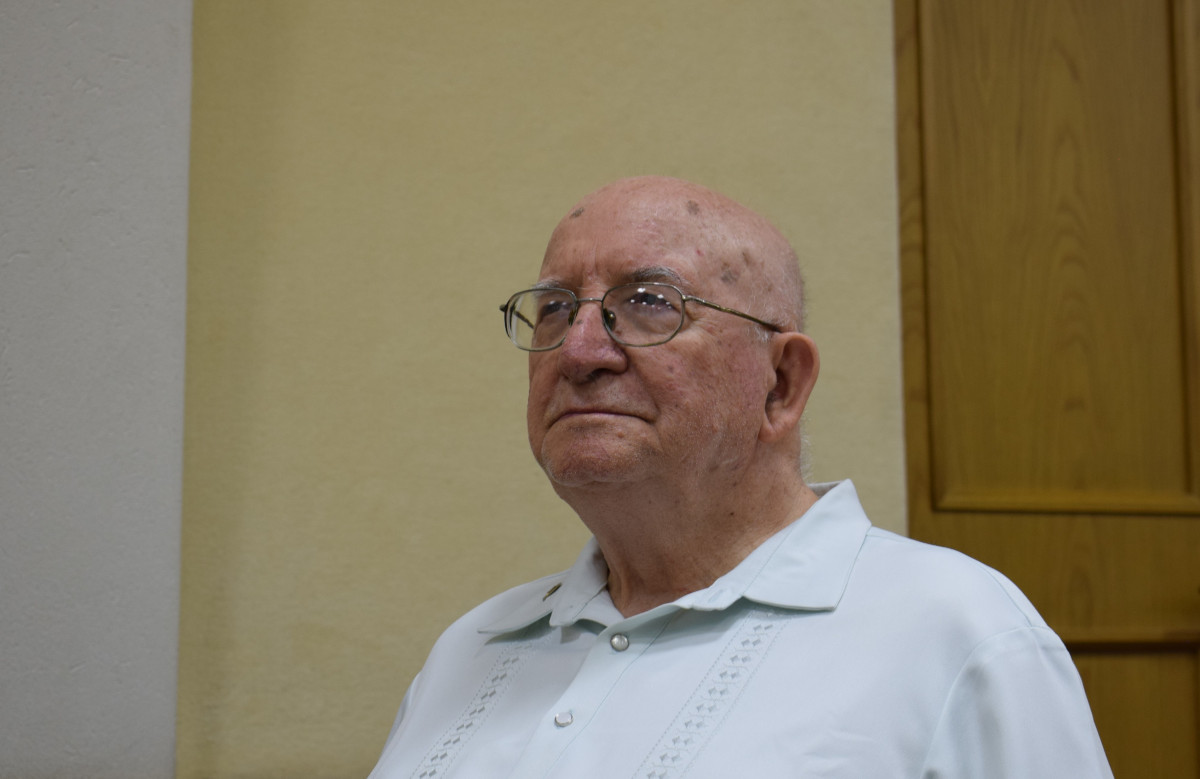Daniel Comboni
Missionários Combonianos
Área institucional
Outros links
Newsletter
Friday, January 29, 2021
Fr. Renzo Carraro, a Comboni missionary working in Manila (Philippines), has gathered in 10 booklets a selection of the best part of his articles of 20 years of collaboration with the Comboni missionary magazine World Mission. “Now – writes Fr. Renzo – I make available these booklets, which I consider not devoid of interest, to those who are interested. They are agile, not too long and ready to be enjoyed at leisure.” We publish below the index of the 10 booklets that you can find in attachment.
1.1 SHUSAKU ENDO: The fascination of the Cross [March 2001, p. 3-16]
It is a remarkable sign of the depth of the Japanese Catholicism that an outstanding figure of writer, thinker and artist like Shusaku Endo could not only appear but be accepted and his books become so popular both in Japan and abroad. Endo has an over riding interest, almost an obsession: the relationship between the Japanese mentality and Christianity.
1.2 ON THE ROADS OF INTER-FAITH DIALOGUE
1.2.1 WHERE EAGLES DARE. Thomas Merton and Bede Griffiths: two Pioneers of Dialogue [May 2001, p. 18-24]
In their different destinies, the English and the American Monks show remarkable similarities in the spiritual adventure of discovering the wisdom of the East, of Hinduism and Buddhism. They are exemplary of the journey of encounter between different faiths that is the challenge of the future.
1.2.2 THE MARRIAGE OF THE EAST AND THE WEST. THE SPIRITUAL ADVENTURE OF BEDE GRIFFITHS [May 2001, p. 25-35]
Bede Griffiths was a man of great charisma and has been described as “translucently holy”. His often-troubled life was one of continual intellectual and spiritual exploration. He was almost fifty when he was sent to India and to the most exciting and unexpected spiritual adventure that will make of him a symbol of the encounter of the West with the East.
1.2.3 RETURN TO PARADISE. THOMAS MERTON AND BUDDHISM [May 2001, p. 35-41]
Asia and Buddhism impressed Merton very much. He wrote: “We need the religious genius of Asia and of Asian culture to inject a dimension of depth into our aimless threshing about. I would almost say an element of heart, of bhakti, of love”.
1.3 PRAYER: WEST AND EAST
Many people in our world look at the East for their spiritual needs. Transcendental Meditation, Yoga and Zen have already been in vogue, often reduced to a fashion or fitness fad. Christians however were asking seriously if it was possible for them to avail of the riches of oriental spirituality while remaining committed to Christ and to the Gospel. Some forerunners have believed it possible and have blazed the trail. We all have inherited the fruits of their efforts.
1.3.1 MEDITATION: ONLY A FITNESS EXERCISE? [September 2004, p. 43]
1.3.2 CHRISTIAN MEDITATION FACING THE EAST [September 2004, p. 44-47]
1.3.3 LEARNING FROM THE EAST [September 2004, p. 47-51]
1.3.4 YOGA [September 2004, p. 52-53]
1.3.5 ZEN [September 2004, p. 53-55]
1.3.6 John Main: the single minded mystic [September 2004, p. 55-56]
1.3.7 Anthony De Mello: wisdom in the Fragment [September 2004, p. 56-57]
1.3.8 William Johnston: an oriental at Heart [September 2004, p. 57-58]
1.4 HOLINESS IN ASIA
1.4.1 ASIAN HEAVENLY PANORAMA [July 2015, p. 60-63]
From the origin of Christianity until the present time, Asia has been present in the heavenly scenario of Sainthood. This short survey wants to give a hint of the immense wealth of the world of the Saints of Asia and its various facets.
1.4.2 THE HORIZON OF CHRISTIAN LIFE [July 2015, p. 63-69]
With tens of thousands of victims and with original features especially in Japan, Korea, but also in Vietnam and China, martyrdom is the overwhelming feature of Asian holiness. This is another proof that confirms what was experienced in other continents and, undeniably, since the beginning of Christianity. It is not a casual happening, but the consequence of the fact that, because of Jesus, martyrdom is, according to the great theologian Hans Urs Von Balthasar, the horizon of Christian life.
1.4.3 LILIES OF THE BATTLEFIELD [July 2015, p. 69-76]
The tragedy of the atomic bomb is the background of Dr. Paul Takashi Nagai’s holiness in the spiritual anguish of finding a reason for it. Agneta Chang represents the absolute faithfulness to her people when the communist storm was swallowing them and Shigeto Oshida is like a zen flower, blossoming from a war witness of heroism. Three inspiring, noble, truly Asian saintly figures.
1.4.4 HOLINESS IN WAITING [July 2015, p. 77-82]
Two outstanding Asian public figures are on the threshold of canonization, according to well founded inside information. They are very different of their personalities and in the details of their lives: Mother Ignacia de Espiritu Santo in the Philippines promoted, with a life consecrated to prayer and apostolate, a prophetic emancipation of indigenous womanhood and Takayama Ukon in Japan embodied the meekness of Christ with the traditional valor of the Samurais.
1.4.5 Rani Maria Vattalil. A TSUNAMI OF FORGIVENESS [September 2015, p. 83-89]
This is how we can describe the extraordinary witness of the members of Sr. Rani Maria's family who forgave her murderer and caused him to convert to Christianity. A religious sister from the traditional Catholic Kerala, Sr. Rani Maria was a missionary among the Adivasi, the indigenous population of Northern India.
2. COMBONI’S HOLINESS IN HIS FOLLOWERS
Comboni’s canonization is a gift for each one of us, Comboni missionaries, and a challenge to understand the inner logic in this happening that God has prepared for us. What strikes me lately is the quality of witness of the sons and daughters of Comboni as it stands out from the profiles of the confreres and con-sisters who reach the end of their lives on earth and whom I have known.
2.1 COMBONI’S HOLINESS IN HIS FOLLOWERS [2003, p. 3-7]
2.2 Archbishop Agostino Baroni. PATIENT VISION [2018, p. 8-9]
2.3 Bro. Vittorio Fanti. BLUE EYES [2018, p. 10-12]
2.4 Sister Lucia Careddu. FUGITIVE FOR GOD [2018, p. 13-17]
2.5 Fr. Fulvio Cristoforetti. DOUBLE IMPACT [2018, p. 18-22]
2.6 Fr. Giuseppe Ambrosoli. The wars of a man of peace [2018, p. 23-27]
2.7 Bishop Caesar Mazzolari. MISSION ACCOMPLISHED [2018, p. 28-33]
2.8 Fr. Ezechiel Ramin. FATHER LELE’S LEGACY [2018, p. 34-37]
2.9 Bro. Bernard Pratt. SINGING THROUGH LIFE [2018, p. 38-40]
2.10 Bishop Gianfranco Masserdotti. DOM FRANCO’S BICYCLE [2018, p. 41-46]
2.11 TARCISIO AGOSTONI. Lifeblood of Africa [2018, p. 47-53]
2.12 Sister CESARINA BORGHESI. Letters from the dead [2018, p. 54-56]
2.13 Armido Gasparini. A LIFE FOR ETHIOPIA [2018, p. 57-61]
3. The Comboni Charism in Action
3.1 TRAITS OF COMBONI SPIRITUALITY
3.1.1 Mission impossible? Ad gentes [p. 2-3]
3.1.2 Crossing the threshold of hope. Ad extra [p. 3-5]
3.1.3 The option for the poor. Ad paupers [p. 5-7]
3.1.4 A lifelong commitment. Ad vitam [p. 7-9]
3.2 COMBONI JEWELS
3.2.1 DAR COMBONI [p. 10-11]
3.2.2 THE SOCIAL MINISTRY FACULTY [p. 12-13]
3.2.3 WORLD MISSION & COMPANY [p. 13-15]
3.2.4 MISNA: Missionary News Agency [p. 15-17]
3.3 COMBONI PROPHETS
3.3.1 Renato Kizito Sesanna. THE PEN AS A WEAPON [p. 17-19]
3.3.2 Rachele Fassera. BEFORE MALALA [p. 19-20]
3.3.3 Alex Zanotelli. AT THE SCHOOL OF THE POOR [p. 20-22]
3.3.4 Valeria Gandini. A LIFE AGAINST HUMAN TRAFFICKING [p. 23-24]
3.4 EXTRA MUROS
3.4.1 Roberto Pazzi. IN THE HEART OF AFRICA [p. 24-26]
3.4.2 Fr. Luis Butera. SO ABUNDANT A HARVEST [p. 26-28]
3.4.3 Fr. Mario Pezzi. I WITNESSED GOD’S MARVELLOUS WORK [p. 28-30]
3.4.4 Fr. Flaviano Amatulli. LIKE AN OLD TESTAMENT PROPHET [p. 30-31]
3.5 COMBONI PLACES
3.5.1 LIMONE SUL GARDA: LIMITLESS HORIZONS [p. 32-33]
3.5.2 VERONA: THE MOTHER HOUSE [p. 34-35]
3.5.3 KHARTOUM: WHERE HE LEFT HIS HEART [p. 36-37]
3.5.4 ROME: WHERE COMBONI’S SUCCESSOR LIVES [p. 38-39]
3.6 THE COMBONI TREE
3.6.1 The Comboni Fathers & Brothers: PEACE WARRIORS [p. 40-41]
3.6.2 The Comboni Sisters: WOMEN OF THE GOSPEL [p. 41-42]
3.6.3 The Secular Comboni Institute: THE HIDDEN STONE [p. 43-44]
3.6.4 The Lay Comboni Missionaries: CLOSE TO THE ROOTS [p. 44-45]
4. SPECIAL MOMENTS (Contemporary Defining Moments)
4.1 THE END OF COLONIALISM. THE INDEPENDENCE OF INDIA, August 1947 [p. 3-6]
4.2 AWAKENING. THE BANDUNG CONFERENCE, April 1955 [p. 7-12]
4.3 RETURN TO THE ORIGIN. PAUL VI IN THE HOLY LAND, February 1964 [p. 13-16]
4.4 THE WATERSHED. THE CONCLUSION OF VATICAN II, December 1965 [p. 17-22]
4.5 A LOST OPPORTUNITY. THE EDSA REVOLUTION, February 1986 [p. 23-26]
4.6 THE POWER OF PRAYER. THE MEETING OF ASSISI, October 1986 [p. 27-30]
4.7 SUDDENLY BY IMPLOSION. THE CRUMBLING OF THE BERLIN WALL, November 1989 [p. 31-36]
4.8 THE POWER OF FORGIVENESS. THE RELEASE FROM PRISON OF NELSON MANDELA, February 1990 [p. 37-40]
4.9 ARMAGEDDON. THE ATTACK TO THE TWO TOWERS, September 2001 [p. 41-44]
4.10 A PRIEST TO THE LAST. THE FUNERAL OF JOHN PAUL II, April 2005 [p. 45-49]
4.11 CHRIST AT LAMPEDUSA. POPE FRANCIS AT LAMPEDUSA, July 2013 [p. 50-55]
5.1 MISSION IN FICTION [2008, p. 3-7]
Missionaries are still untainted in the mind of the people of our age. Their sacrifice in leaving country and culture is recognized, the witness of their lives at the service of the poor upheld. From the heroes of the The Mission of Ronald Joffe (1986) to the silent victims in the recent Tears of the Sun, missionaries continue to make their appearance on the big screen and in books. This is the presentation of five novels that have as their main character a missionary.
5.2 “The Keys of the Kingdom” by Archibald Cronin [2008, p. 8]
5.3 “Death comes for the Archbishop” by Willa Cather [2008, p. 9]
5.4 “Black Robe” by Bryan Moore [2008, p. 10]
5.5 “I have heard the owl call my name” by Margaret Craven [2008, p. 11]
5.6 “The Confession of Joe Cullen” by Howard Fast [2008, p. 12]
5.7 “Black Robe”: An Epic of Endurance [2008, p. 13-14]
5.8 Inner Beauty - “THE INN OF THE SIXTH HAPPINESS” [2008, p. 15-16]
5.9 RAGGED HEROISM - In The Devil at 4 o’clock [2008, p. 17-18]
5.10 SENSELESS SLAUGHTER “Tears of the Sun” [2008, p. 19-20]
6. MISSION ACROSS THE CONTINENTS BY FR. LORENZO CARRARO, Comboni Missionary [2012, p. 1-104]
Fifty years of priesthood and of missionary life are the “excuse” behind this book. The real reason is the desire of a Comboni missionary priest to share his life, loaded with meaningful experiences and encounters and, in this way, render tribute to the Lord of the Mission. Fr. Renzo Carraro, MCCJ, offers, in a simple and passionate way, some of the stories of his life. It is the call to be a missionary that has brightened his life and his sharing testifies that a life for others and for the mission is worth living.
7.1 JEWISH HERITAGE AND CHRISTIAN SPIRITUALITY
7.1.1 A God to love. The concept of God in the Old and New Testament [November 2017, p. 4-7]
The contribution of the Old Testament to our concept of God is immense. In the Bible, to acknowledge the existence of God is wisdom. The failure to recognize God in creation is the result of a corruption of our humanity. On the contrary, religion becomes a foundation for human dignity and value.
7.1.2 Israel’s Pride. GOD’S LAW IN THE OLD AND NEW TESTAMENT [November 2017, p. 7-11]
The Law is the content of the covenant between God and the Chosen People. The Law is their great wealth, the reason of their glory in front of all the other nations. The heart of the Law is love: the Torah is object of meditation, prayer, love and contemplation. In the New Testament, Jesus is the New Law.
7.1.3 The throne of God’s presence. THE WORSHIP OF GOD IN THE OLD AND NEW TESTAMENT [November 2017, p. 11-14]
When David wants to build a temple, God is reluctant to accept: Heaven is his dwelling and the earth his footstool. But Yahweh overlooks his transcendence and enters history: first the Ark and the Tabernacle, then the Temple are the symbols of his presence among his people. In the fullness of time, Jesus’ flesh is the real Throne of God’s Presence.
7.2 HIDDEN TREASURE: THE SOCIAL DOCTRINE OF THE CHURCH
7.2.1 The Gospel In The Marketplace [July 2016, p. 15-21]
The XIX century industrial revolution caused the social question which is the exploitation of the urban masses. Karl Marx and the Communist movement were the first to acknowledge the impact of the social question. The Church also was awaken to that harsh reality and responded with an original interpretation of the Gospel message, applied to the market-place.
7.2.2 The Christian Anthill [July 2016, p. 21-23]
Like industrious, indefatigable ants, Christian saints and other prominent disciples of Jesus have always, in many ways and with inexhaustible inventiveness, come to the help of humanity’s sufferings and sometimes given origin to institutions which are now the backbone of civilized society.
7.2.3 The Seven Pillars [July 2016, p. 23-28]
It is an application of the principles of the Gospel to social problems: it has something essential to say about the concept of human being, family, work, solidarity, destination of goods, development and peace.
7.2.4 A Success Story [July 2016, p. 28-30]
The Social Doctrine of the Church found a favorable time when the Christian Democrat political parties appeared. They are the protagonists of the reconstruction of the continent after World War II and the result of their victory embodied the most successful realization of its principles.
7.2.5 Shifting Grounds [July 2016, p. 30-36]
Globalization is an economic tsunami that is sweeping the planet. It can’t be stopped, but there must certainly be many steps people can take to slow it down and make it more equitable to wealth distribution, living salaries, social security.
7.3 BEST WISHES, DEAR POPE! JOHN PAUL II’S SILVER JUBILEE AS A POPE
7.3.1 Karol the Great [November 2003, p. 38-39]
7.3.2 The Many Records of A Pontificate [November 2003, p. 39-40]
7.3.3 Milestones of A Pontificate [November 2003, p. 41-43]
7.3.4 They Love His Strong Words [November 2003, p. 43-44]
7.3.5 A Missionary Heart [November 2003, p. 45-46]
7.3.6 A Contrasting View [November 2003, p. 47-49]
7.4 POPE FRANCIS: THE PEOPLE’S POPE
7.4.1 The Reasons of Our Joy [December 2013, p. 50-54]
7.4.2 Christ at Lampedusa [December 2013, p. 54-56]
7.4.3 The Culture of Encounter [December 2013, p. 56-60]
7.4.4 Pope Francis and the Radical Gospel [December 2013, p. 61-62]
7.4.5 Pope Francis’ Pearls [December 2013, p. 63-66]
8.1 THE HIGHEST FORM OF CHARITY [2019, p. 3-4]
8.2 Prof. Giorgio La Pira “MY ONLY PARTY CARD IS MY BAPTISM CARD” [2019, p. 5-9]
8.3 Aldo Moro (1916-1978) SACRIFICIAL LAMB [2019, p. 9-15]
8.4 Benedicto Kiwanuka MARTYR OF JUSTICE [2019, p. 15-21]
8.5 Raul Manglapus A RENAISSANCE MAN [2019, p. 21-27]
8.6 Prof. Alcide De Gasperi AN OUTSTANDING CHRISTIAN POLITICIAN [2019, p. 27-31]
8.7 Igino Giordani (1894-1980) MR. FIRE [2019, p. 31-37]
9.1 THERESE IN THE HEART OF THE CHURCH [October 1999, p. 3-7]
9.2 THERESE IN THE HEART OF MISSION [October 1999, p. 8-16]
9.3 SPIRITUAL REFLECTION: Paths to Contemplation. THE BETTER PART [September 2014, p. 17-21]
9.4 FUTURE HORIZONS: 10 Pastoral Guidelines [February 2014, p. 21-24]
9.5 SPIRITUAL REFLECTION: THE JOY OF THE SHEPHERD. THE FIVE WAYS OF PENANCE [March 2018, p. 25-28]
9.6 THE HIDDEN TREASURE: OUR BAPTISMAL PRIESTHOOD
Vatican II rediscovered the common priesthood of the faithful and yet people still think that only the Priests have the full responsibility of Christian life. To find this treasure can change the perception of our life and can give a new, more balanced and harmonious view of the church and un-tap unsuspected energies from the new awareness of the laity, their priestly conscience and spirituality.
9.6.1 We Are All Priests [January 2005, p. 30-33]
9.6.2 A Traditional View [January 2005, p. 33-35]
9.6.3 A Priestly Spirituality [January 2005, p. 35-39]
9.6.4 The Originality of Christ’s Priesthood [January 2005, p. 39-41]
9.6.5 Servants of the Real Presence of Christ [January 2005, p.42-44]
9.7 TRANSFORMING EUCHARIST [2003, p. 45-54]
10.1 WOMEN IN THE CHURCH-1 [2006, p. 4-8]
10.2 WOMEN’S UPHILL STRUGGLE [2006, p. 8-11]
10.3 THE HIGHLIGHTS OF THE LETTER [2006, p. 11-12]
10.4 A RICH FEMINIST HERITAGE [2006, p. 13-18]
10.5 WOMEN IN THE CHURCH-2 [2006, p.18-20]
10.6 THE EMERGENCE OF WOMEN [2006, p. 20-22]
10.7 A RICH FEMINIST HERITAGE [2006, p. 22-23]
10.7.1 Saint Hildegard of Bingen (1098-1179) [2006, p. 23-24]
10.7.2 Saint Gertrude the Great (1253-1302) [2006, p. 24-26]
10.7.3 Saint Bridget of Sweden (1303-1373) [2006, p. 26]
10.7.4 Blessed Julian of Norwich (1342-1416) [2006, p. 27-28]
10.7.5 Saint Catherine of Siena (1347-1380) [2006, p. 28-29]
10.7.6 Saint Teresa of Avila (1515-1582) [2006, p. 29-30]
10.7.7 Saint Therese of Lisieux (1873-1897) [2006, p. 30-31]
10.8 WHAT IS FEMINIST THEOLOGY? [2006, p. 32-35]
10.9 DEAD ENDS [2006, p. 35-37]
10.10 SUGGESTIONS FOR MEDITATION [2006, p. 38-41]
10.11 REFLECTIONS ON THE LETTER ABOUT “COLLABORATION” AND THE TEACHING OF JOHN PAUL II ABOUT WOMEN [2006, p. 42-49]
10.12 CONCLUSION: a poem and a prayer [2006, p. 49-50]






